A look at a pioneering vocal trio of the 50’s-60’s that laid the groundwork for the Manhattan Transfer and others, after the jump ….
From 1957 to 1964, the vocal jazz world was turned upside down by a pioneering trio of singers known as Lambert, Hendricks & Ross – who were not the inventors of, but were the ones who popularized the practice of vocalese – the setting of lyrics to established jazz instrumental songs. In fact, it was the longtime British-born Downbeat magazine critic Leonard Feather who first coined the phrase, after hearing the first LH&R album in 1957.
Prior to this, jazz singing tended to be either solo (or standard ensemble singing) to songs that had already been written by standard songwriters/lyricists. LH&R took instrumental songs (especially those that came after WW-II, following the end of the big-band era) and adapt lyrics to instrumental riffs … and the fact that having three voices meant they were not limited to small groups, but could emulate larger ensembles. Before we delve into their music, let’s have a brief look at the individuals involved.
Dave Lambert was born in Boston in 1917 and was an innovator not only in vocals but in sound itself. He was a big band veteran, having sung with big bands in the early 40’s with both Johnny Long and Gene Krupa. The All-Music Guide’s Scot Yanow noted that Lambert appeared with Charlie Parker on a 1949 backed “Bird” on his 1953 recordings of “Old Folks” and “In the Still of the Night,” renditions that are “somewhat bizarre”.
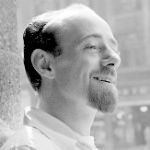
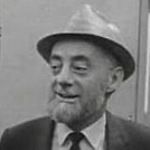
Jon Hendricks was born in Newark, Ohio in 1921 and as the son of a minister (one of 14 children) the family eventually settled in Toledo. He served in WW-II, and afterward studied law on the GI Bill. But it was a chance to sit in with legend Charlie Parker – nicknamed “Bird” – that pointed to his real future.
“It seemed like I must have scatted about 34 choruses,” Hendricks says. “I kept thinking I should quit, but just one more. I can do better than that. One more, one more. So we had this bandstand confab. Bird says, ‘What you doing, man?‘ I said, ‘I’m studying law.’ He says, ‘You ain’t no lawyer.'”
And indeed: Hendricks moved to New York and ghostwrote lyrics for a Tin Pan Alley publisher. Interestingly, after the demise of LH&R: circa 1966, Jon Hendricks recorded a song called Fire in the City with a back-up band that used its original name The Warlocks …. whom you know as the Grateful Dead. (Yes, really …. at this link).
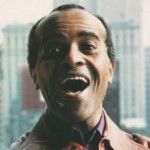

Annie Ross was born in England in 1930 (to Scottish parents) and moved with her family to Los Angeles three years later. As an eight year-old, she appeared in the Little Rascals short Our Gang Follies of 1938 where she sang the traditional Scottish tune The Bonnie Banks o’ Loch Lomond – which you can hear at this link.
After singing stints in London and Paris, she returned to the US and released her first album in 1952. Later, she toured with Lionel Hampton’s band and – most importantly for this story – recorded a vocalese album in 1954 with King Pleasure – where earlier versions of songs she would later bring to LH&R would emerge.


The advent of the band came in 1953, when Jon Hendricks wanted to add lyrics to the Woody Herman Band tune Four Brothers yet knew the arrangement would need a second voice. He contacted Dave Lambert based solely upon reputation, and the recording the two made was such a success, they decided to become a duo. Subsequent recordings from 1954-1957 were critically praised, yet met with less success … until they decided to tackle the music of Count Basie … with a much grander vision in mind:the use of a 12-voice choir.
They planned to use studio singers, and asked Annie Ross to help coach them. Yet they were unhappy with either their talents (or lack of ability to sight-read music). Instead, they decided to multi-track their own voices instead, and asked Annie Ross to assist …. and Sing a Song of Basie was a smash hit that made them much in demand – in fact, Count Basie asked them to record an album with his band – and so LH&R became a full-fledged trio.
Signing a contract with Columbia, they went on to have several more albums that garnered critical praise, sales and more exposure: even performing on an early Playboy After Dark episode. And as an interracial trio … which in the 1950’s was daring.
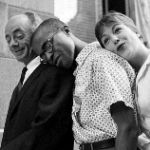
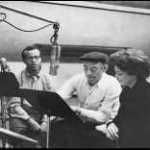
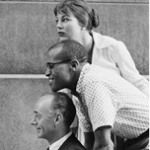
Tired of touring (and battling substance abuse) Annie Ross left the group in 1962. Lambert and Hendricks found a replacement in the name of Yolande Bavan – a Sri Lankan native, which was also eye-raising in the early 60’s. But she had a difficult task to replace Annie Ross – and while most critics like her ensemble singing, they all agreed her improvising was not up to Ross, despite some favorably reviewed recordings. Eventually, Lambert, Hendricks & Ross broke-up in 1964 – prophetic, at the start of the British Invasion change in music.
Just two years after their split, Dave Lambert died in October, 1966 (at age 49) on the Connecticut Turnpike, after he stopped to help a stranded motorist. I once heard Jon Hendricks tell Eric Jackson (of WGBH radio) in Boston how he misses Dave Lambert each day, calling him a genius who could build a radio from scratch ….. and surprised Jackson by telling him Lambert was born in Southie (which, after the interview, Eric Jackson said he did not know).
Yolande Bavan continues to this day in acting and singing, and Annie Ross and Jon Hendricks are still quite active today. Annie Ross is age 84, was the subject of a 2012 documentary and sings at the Metropolitan Room in New York City.
Jon Hendricks is age 93 and teaches and sings form time-to-time. After many years, he and Ross reunited and have made special appearances together at times.
There would be no Manhattan Transfer without LH&R, and let’s close with the singer Al Jarreau – who was a teenager when he first heard the trio on The Steve Allen Show.
“I have this image in my head of me in the house I grew up in, and hearing this incredible music on the television show, going over to it, and there’s Jon Hendricks, Dave Lambert and Annie Ross,” Jarreau says. “It knocked me out of my socks, and I’m still in flight”.
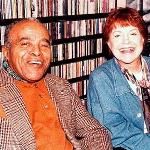
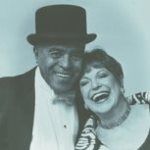
Here are two songs featuring them. One was from Dave Brubeck’s play The Real Ambassadors about racial harmony .. where they back Louis Armstrong.
The second is Annie Ross’ most famous tune – taking the Wardell Gray song Twisted and adding lyrics. This has been covered by Bette Midler and Joni Mitchell (among others) and is certaionly the trio’s best-known song.
My analyst told me that I was right out of my head
The way he described it: he said I’d be better dead than live
I didn’t listen to his jive
I knew all along he was all wrong
And I knew that he thought I was crazy but I’m notMy analyst told me that I was right out of my head
He said I’d need treatment: but I’m not that easily led
He said I was the type that was most inclined
When out of his sight to be out of my mind
And he thought I was nuts, no more ifs or ands or butsThey say as a child I appeared a little bit wild
With all my crazy ideas
But I knew what was happening, I knew I was a genius
What’s so strange when you know that you’re a wizard at three?
I knew that this was meant to beI heard little children were supposed to sleep tight
That’s why I drank a fifth of vodka one night
My parents got frantic, didn’t know what to do
But I saw some crazy scenes before I came to
Now do you think I was crazy?
I may have been only three … but I was swingingMy analyst told me that I was right out of my head
But I said “Dear Doctor: I think that it’s you, instead
‘Cause I have got a thing that’s unique and new
It proves that I’ll have the last laugh on you
‘Cause instead of one head… I got two
And you know two heads are better than one”
3 comments